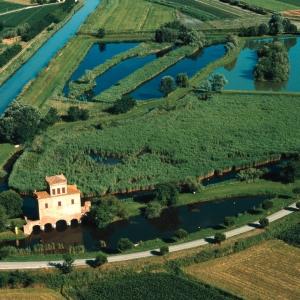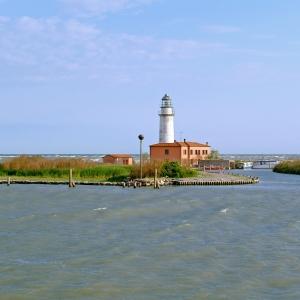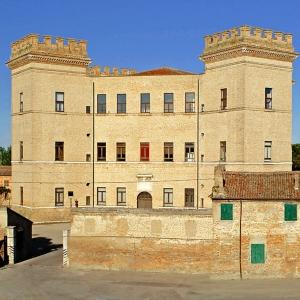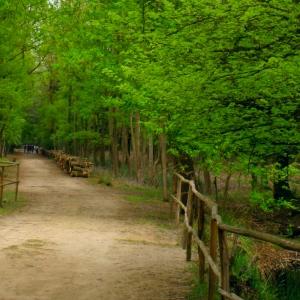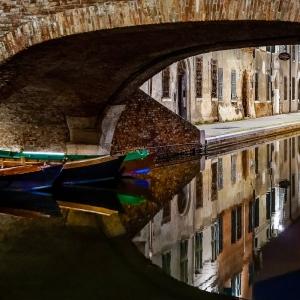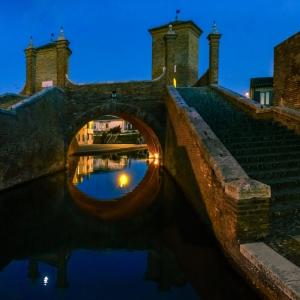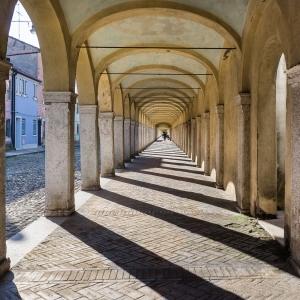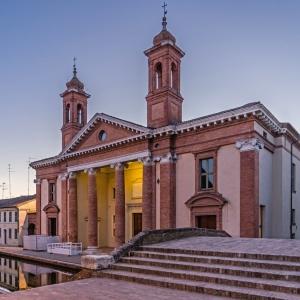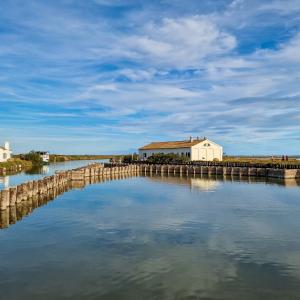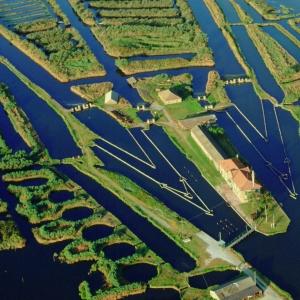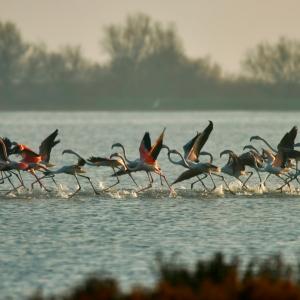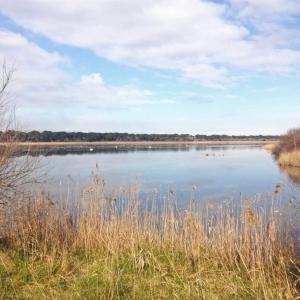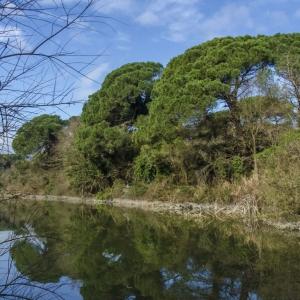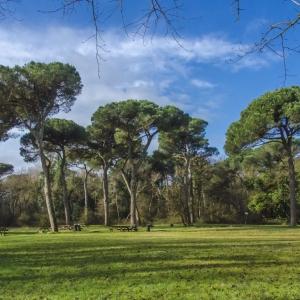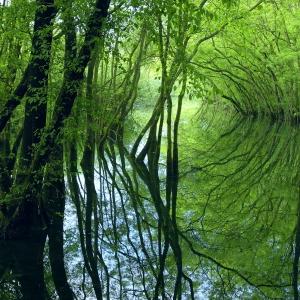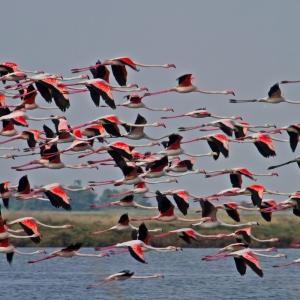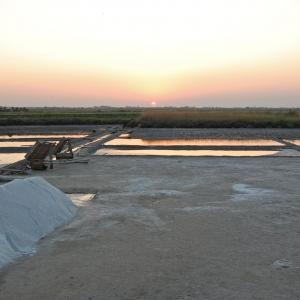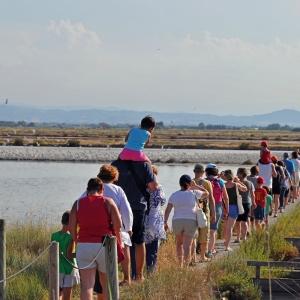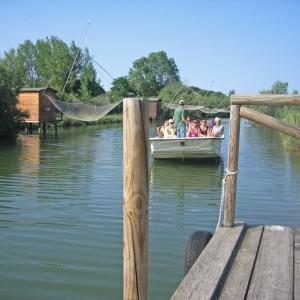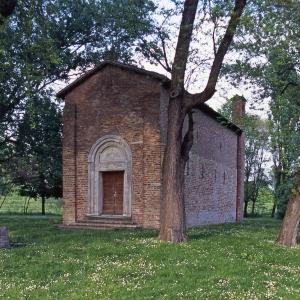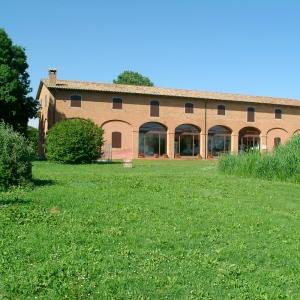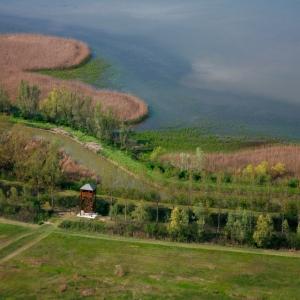STATIONS OF THE PO DELTA PARK
Station 1: Volano – Mesola – Goro
This is the northernmost station among those in the Emilia Romagna-based Park and it stretches over an area covering more than 12,000 hectares, mostly torn away from the water by the reclamation works carried out over the centuries. There are many examples of artistic and natural excellences to visit in this area, obviously in a fascinating balance between land and water!
In Goro, for example, we can visit the Sacca, a large crescent-shaped inlet, enclosed between the Po di Goro and Po di Volano rivers, known above all for the production of clams, which in these sandy bottoms find their ideal habitat. The Sacca can be visited by motorboat, providing not only the opportunity to see the breeding of mussels, but it is also possible to reach also l’Isola dell’Amore (Love Island), a long strip of sand bordering with the sea. From here, and in a short time, you can also reach the mouth of the Volano river, an ecosystem characterised by recently formed sandy beaches and pine forests.
Instead, in the municipality of Mesola, we can immerse ourselves in the extraordinary nature of the Gran Bosco della Mesola (Great Mesola Wood), memories of the ancient forests that were found until a few centuries ago along the Adriatic coast and today represent the largest wooded area in the Ferrara area. Here you can go on enthralling excursions on foot, by bike or by electric bus and come across the magnificent specimens of native deer that live free in the clearing.
Some ten kilometres further away, there is the town of Codigoro, with its extraordinary Pomposa Abbey, a masterpiece of Romanesque art and a treasure trove of art and history. From a naturalistic point of view, the Canneviè Oasis, part of a larger abandoned valley complex of coastal lagoons that once surrounded Pomposa Abbey and the Volano Pine forest is well worth visiting.
Finally, do not forget the Bertuzzi, Cantone and Nuova valleys, three basins separated by dune belts emerging from the water, where pink flamingos, herons, little egrets and many other species of birds live together in harmony.
Station 2: Historic Town Centre of Comacchio
The second station of the Park includes the splendid historic town centre of Comacchio. Many people know as “Little Venice” is the real “capital” of the Po Delta Park; a city on the water that, with its dense network of bridges and canals, enchants visitors gifting them an unforgettable experience. Founded on thirteen islets and successor to the ancient town of Spina, Comacchio is a treasure trove of impressive buildings and suggestive views.
A visit to its monuments must not be missed, above all the Trepponti, a fortified gate to the city for those who came from the sea along the navigable canal and which, today, is the true symbol of Comacchio, and the Portico dei Cappuccini, a suggestive 17th- century loggia consisting of 142 arches. A stop at the Ancient Delta Museum is an absolute must, with its rich heritage of archaeological assets deriving from the territory as well as the precious, perfectly/preserved cargo of a Roman ship dating back to the Augustan era, and to the Manifattura dei Marinati (a historical fish processing plant), to learn more about the history and processing of eels.
Station 3: Comacchio Valleys
A few kilometres from the historic town centre, the extraordinary landscape of the Comacchio Valleys opens out before your eyes, this is the third station of the Park. A landscape of extraordinary beauty where the changing colours of the brackish stretches of water are interrupted by sand belts that outline extravagant geometries. A magical realm that arises between land and water, for centuries of vital importance to the economy of the local territory and today it is extraordinary natural environment, a destination which is visited every year by thousands of visitors.
The Comacchio Valleys are a unique location in Italy, every bit as good as the famous French Camargue. They consist of 13,000 hectares of brackish water, alternating with pine forests, oases and woods in the surrounding area, the ideal habitat for hundreds of species of birds, including pink flamingos, which, for years now have formed a permanent colony in the Saltworks. The starting point of the boat visits is in Casone Foce, south of Comacchio, and the route enters the valleys in order to discover the ancient fishermen’s huts.
Station 4 - Pineta di San Vitale and Pialasse di Ravenna
Before the two stations of the Park in Ravenna, this area contains some excellent naturalistic features of great value, in a territory in which the pine forests alternate with low marshlands and freshwater valleys. It is impossible, for example, not to be surprised by entering the extensive, lush greenery of the Pineta of San Vitale, the largest part of the forest complex that historically separated the city of Ravenna from the sea, which today can be visited thanks to numerous routes available on foot, by bicycle or on horseback. From here it is also possible to reach the Pialasse di Ravenna, large brackish lagoons connected to the sea, which can also be visited on board a small boat to admire marvellous landscape views from a different perspective.
Another place not to be forgotten is the wonderful Oasi di Punte Alberete, with its unique flooded forest and a nesting site for extremely rare birds, Valle Mandriole, the realm of herons and a real paradise for nature photography and birdwatching enthusiasts, alongside the splendid Bardello, a gentle flooded grassland populated by water turtles, several species of birds as well as a vast range of flora.
Station 5: Pineta di Classe and Cervia Saltworks
The second station located in the Ravenna area has its cornerstone at the mouth of the river Bevano, the only intact natural outlet into the Adriatic Sea and one of the wildest environments of great naturalistic and biodiversity importance along the entire Adriatic coast. Inside this area we can find the Ortazzo Valley, a large freshwater marsh constantly submerged by the waters of the river Bevano river, the Fosso Ghiaia canal and the wetlands of Ortazzino, a brackish area adjacent to the beach characterised by a remarkable variety of environments. In addition to this, the splendid Pineta di Classe, together with the woodland in Cervia, represent the remains of the oldest pine wood in the Ravenna area, alongside a 5 km-stretch of beaches and uncontaminated dunes, in which the little tern, the Kentish plover, and the oystercatcher build their nests.
The Cervia Saltworks, of Etruscan origin and still in operation to this day, are also of extraordinary value. They feature numerous stretches of water of varying degrees of salinity and have always been a natural population and nesting reserve for many animal and plant species. When the Saltworks are open, guided tours are possible on foot, by bike, by canoe, by train and by electric boat.
Station 6: Campotto di Argenta
The sixth and final station of the Park revolves around the territory of Argenta, one of the largest towns in the province of Ferrara, which preserves significant evidence of its past, not only through its remaining monuments or archaeological finds, but also through its waters, valleys and land reclamation. All this is thanks above all to the Eco-museum which, with the Campotto Valleys, highlights the most significant historical, urban, architectural, economic and social heritage of the area.
The Argenta Ecomuseum is divided into three sections: The Argenta Valley Museum, the Museo della Bonifica (Museum of Land Reclamation) and the Civic Museum. The expanses of water in the Argenta and Campotto valleys, resulting from reclamation works, make up the extraordinary naturalistic section, providing a wealth of opportunities for visits on foot or by bicycle. A real island of biodiversity, where the balance between land and water creates optimal conditions for the co-existence of various animal and plant species.
The Museum of Land Reclamation, together with the still functioning Saiarino plant, represents the hydraulic section and, in addition to being a museum of historical documentation, it also serves as a real work site.
Finally, the Civic Museum, located inside the church of San Domenico, bears witness to the artistic and historical expressions of the city, with its civic art gallery and archaeological section.



